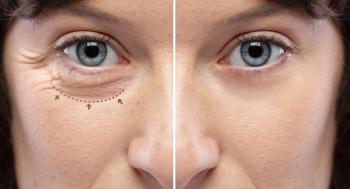
J&J vision receives CE mark approval for new corneal refractive technology
The new laser will allow surgeons to perform refractive correction on patients with myopia, with or without astigmatism using the SILK Procedure.
Johnson & Johnson MedTech, announced that it has received CE Mark approval for its next-generation laser vision correction solution, the ELITA Femtosecond Laser System.
The new laser will allow surgeons to perform refractive correction on patients with myopia, with or without astigmatism using the SILK Procedure (Smooth Incision Lenticule Keratomileusis), a new lenticular procedure. The ELITA System leverages an ultra-precise laser pulse and fast laser delivery system to deliver a very smooth corneal surface, making lenticular removal extremely easy, according to a press release from J & J.
Xiao-Yu Song, Global Head of R&D, commented, “The ELITA System represents a generational leap in corneal refractive technology, leveraging advanced technologies and designs to deliver improvements in surgical experiences and patient outcomes. The early clinical results have shown promising visual outcomes and patient satisfaction data, leading us to believe that the ELITA System, and the SILK Procedure, has the potential to elevate the standard of care for patients with myopia.”
The SILK Procedure brings to market a proprietary biconvex lenticule shape that facilitates posterior and anterior surface matching without corneal folding when the lenticule is removed from the cornea and better preservation of corneal biomechanical strength and faster nerve regeneration due to less cutting of corneal fibers.
The ELITA Femtosecond Laser System is indicated for patients with myopia with or without astigmatism up to -12 diopters of sphere, up to -6 diopters of cylinder, with the sum of sphere and cylinder between -1.00 and -12.00 diopters using minus cylinder convention. It is also indicated for use in LASIK flap procedures. The technology will be available soon for ophthalmologists in select countries across Asia Pacific and Europe.
The ELITA Femtosecond Laser System is not yet approved for use in the U.S.
Newsletter
Don’t miss out—get Ophthalmology Times updates on the latest clinical advancements and expert interviews, straight to your inbox.









































